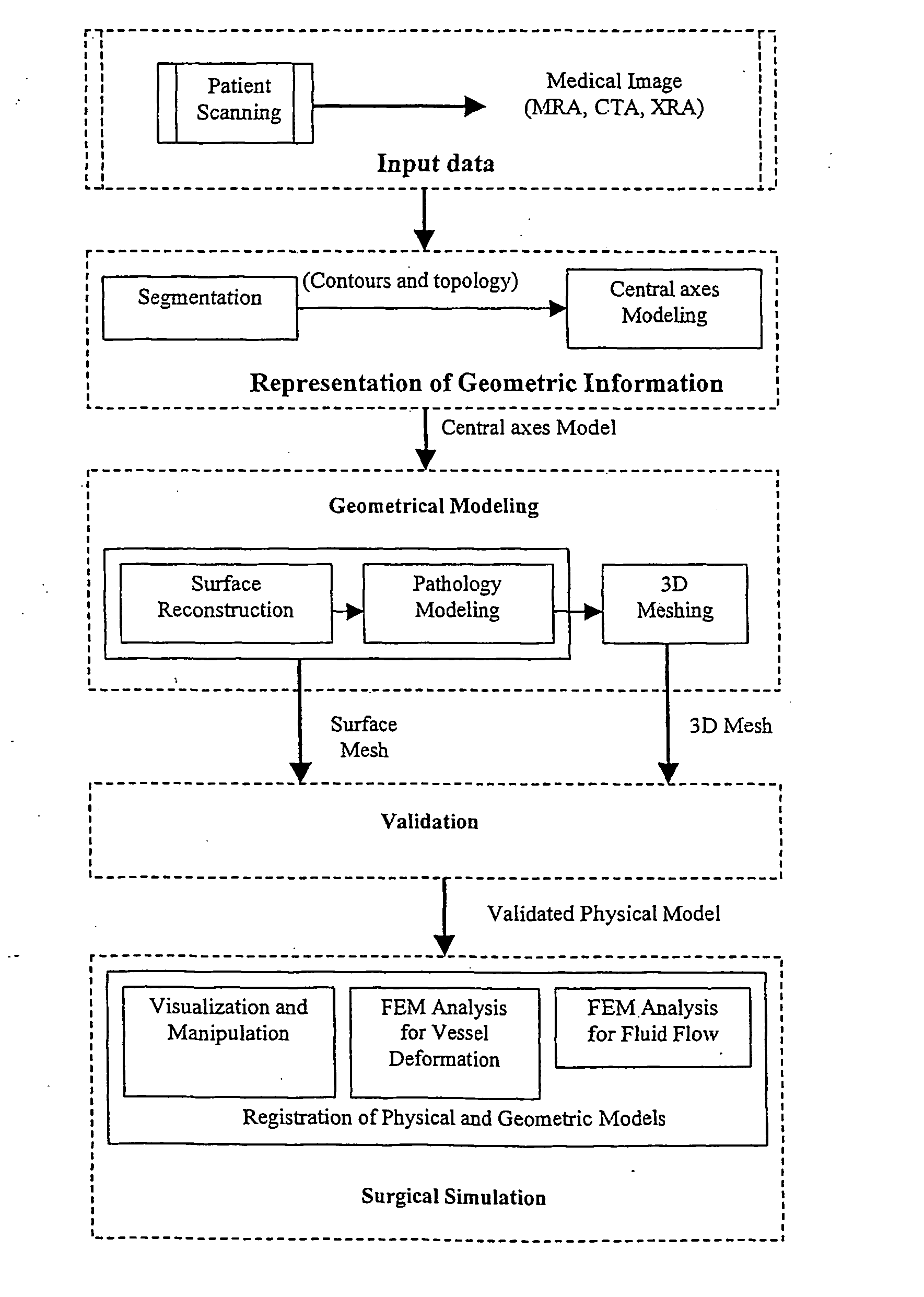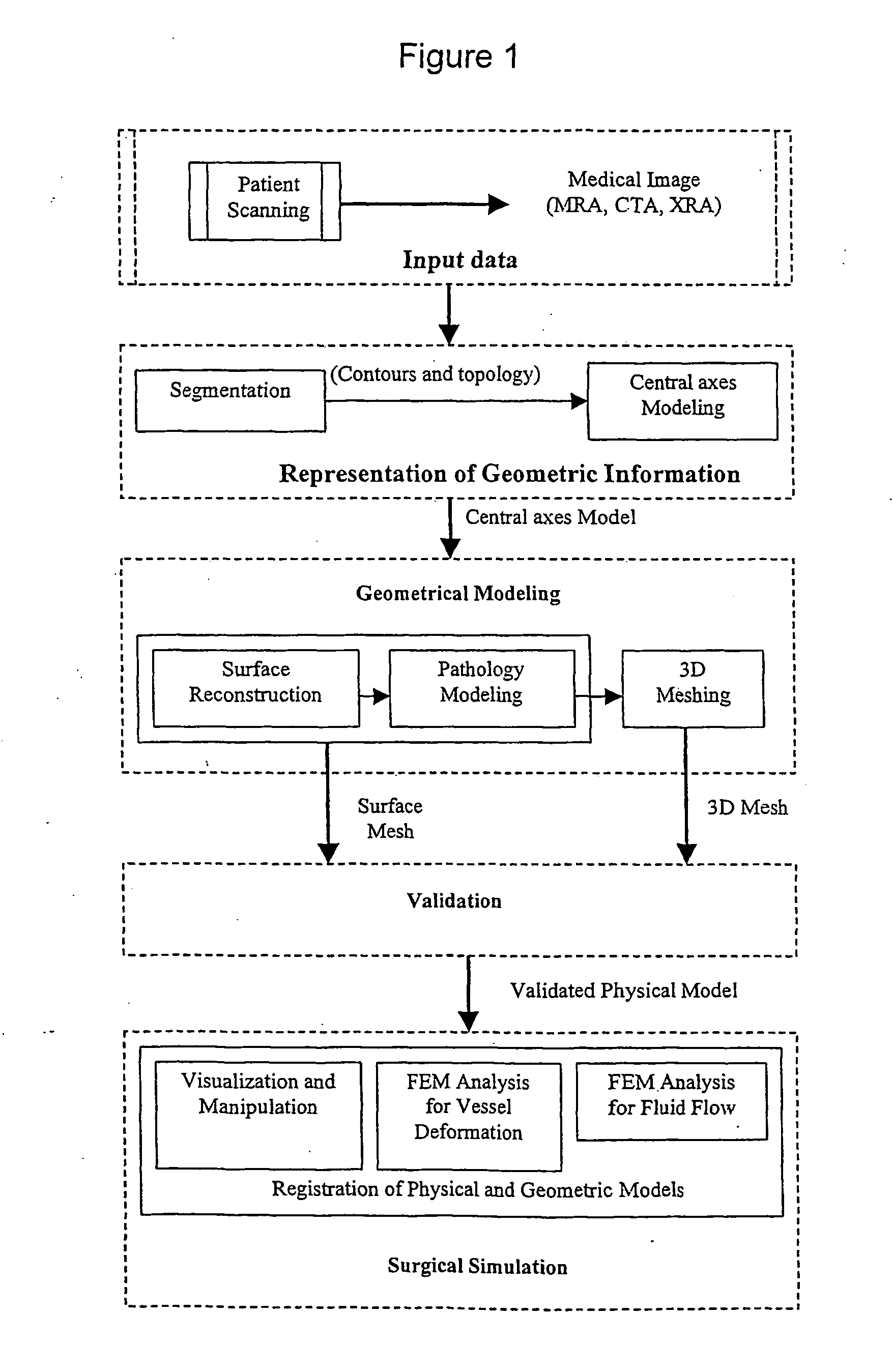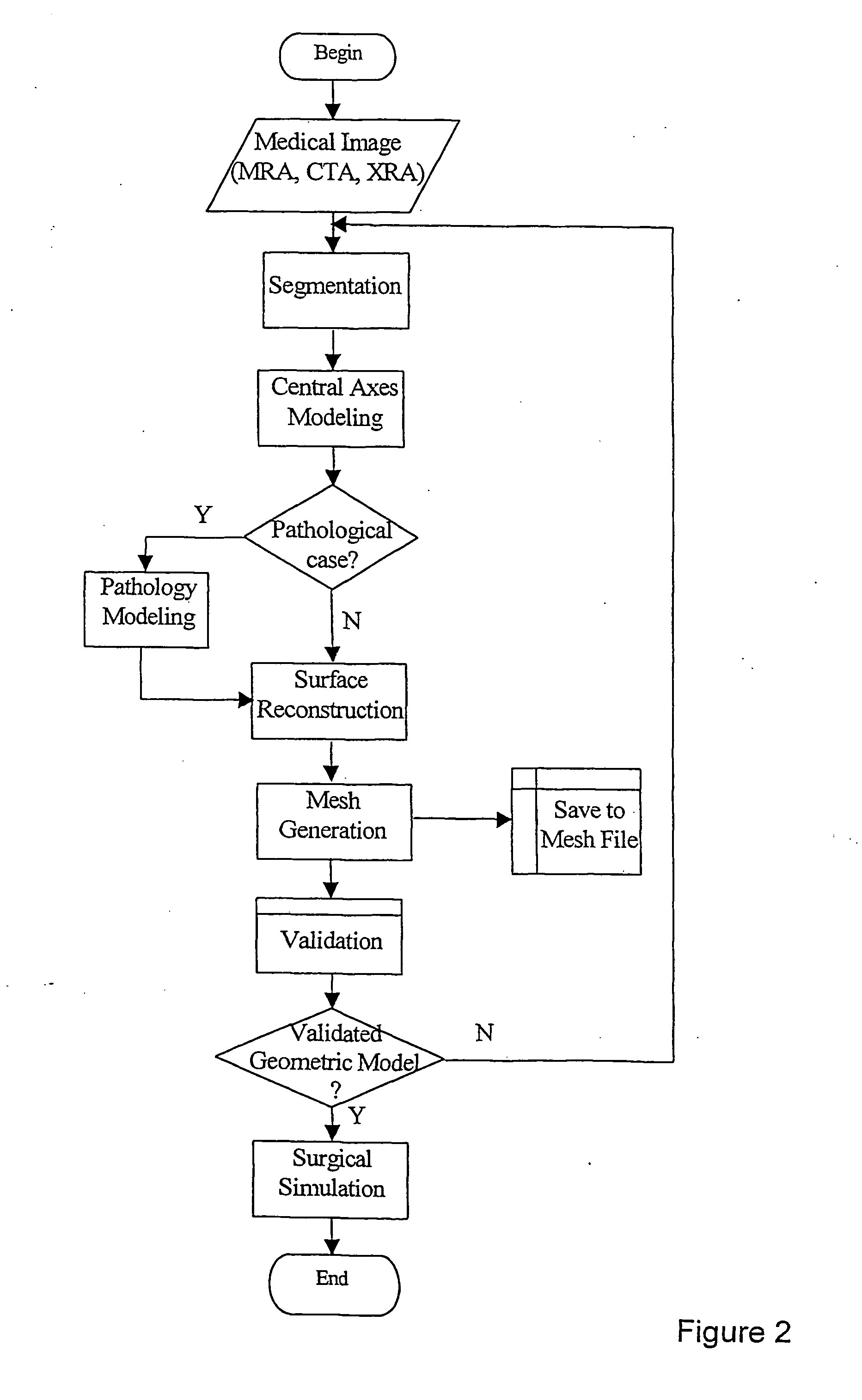System and method of anatomical modeling
an anatomical modeling and system technology, applied in the field of anatomical and pathological modeling, can solve the problems of preventing real-time implementation, computationally demanding, and boolean operations for medical objects, but not particularly meaningful, and processing the three-dimensional data directly from the original medial image,
- Summary
- Abstract
- Description
- Claims
- Application Information
AI Technical Summary
Benefits of technology
Problems solved by technology
Method used
Image
Examples
Embodiment Construction
With reference to FIG. 1, a flow chart is provided which indicates the general steps taken in regard to creating a human anatomy model for surgical simulation.
The first stage is that of obtaining input data for creating the model. This may be achieved by scanning the relevant patient using, for example, MRI, CT, Ultrasound, X-ray rotational angiography (XRA) and obtaining the appropriate medical volume images therefrom.
It is also to be appreciated that where the present invention is being utilised in an operative situation, such as image-guided surgery, the input data may be a combination of pre-operatively acquired images and intra-operatively acquired images.
Once this input data has been obtained, the next stage is to derive a representation of the geometric information. Hence, the topological and geometrical information like contours, radii and central axes are extracted from the medical images. With this information segmentation is performed in order to obtain an appropri...
PUM
 Login to View More
Login to View More Abstract
Description
Claims
Application Information
 Login to View More
Login to View More - R&D
- Intellectual Property
- Life Sciences
- Materials
- Tech Scout
- Unparalleled Data Quality
- Higher Quality Content
- 60% Fewer Hallucinations
Browse by: Latest US Patents, China's latest patents, Technical Efficacy Thesaurus, Application Domain, Technology Topic, Popular Technical Reports.
© 2025 PatSnap. All rights reserved.Legal|Privacy policy|Modern Slavery Act Transparency Statement|Sitemap|About US| Contact US: help@patsnap.com



